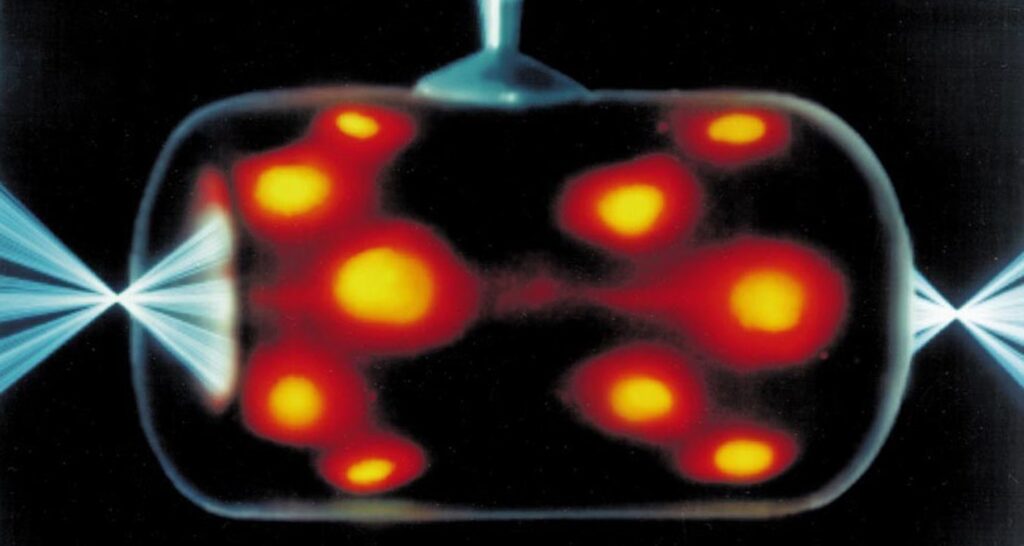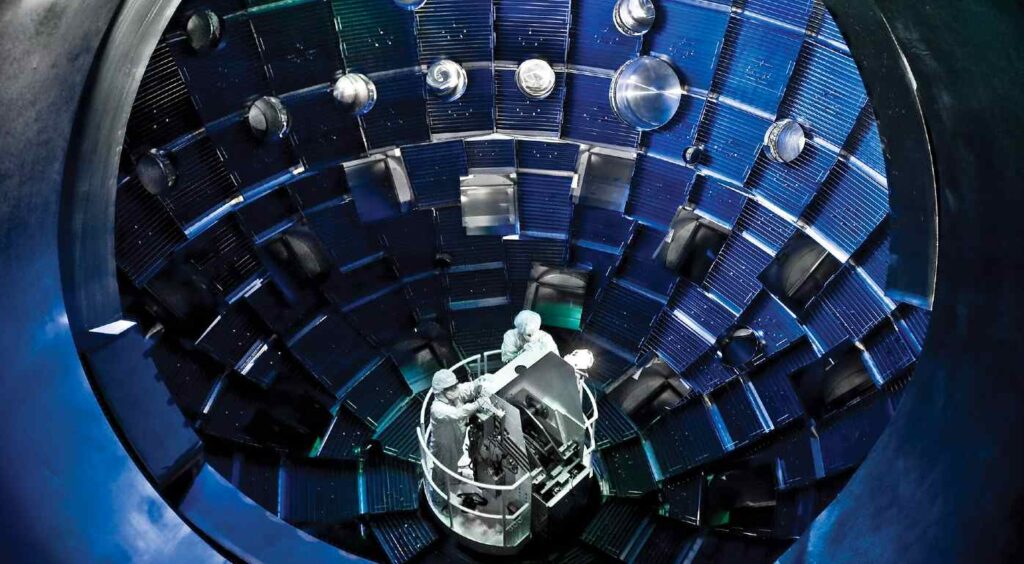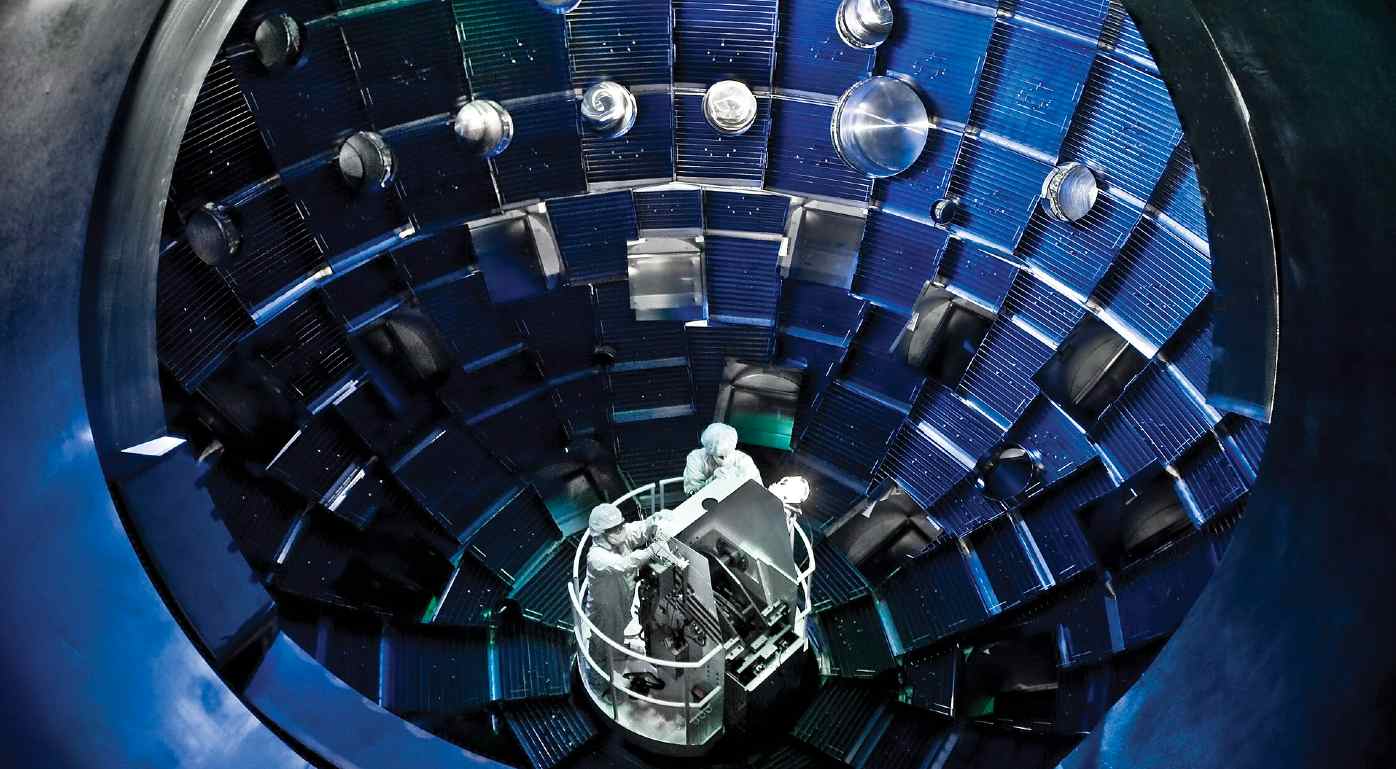
Nuclear fusion promises unlimited renewable energy, but technological and physical challenges have not allowed humans to harness the power of the sun just yet.
Now using super-powerful lasers, there’s a chance fusion reactors could power our cities without many of the Marvel Universe-style science requirements—such as heating plasma to above 100 million Kelvin, or building multi-billion dollar facilities—that currently characterize many of the attempts to create the final innovation in energy.
Innovation requires competing ideas, and while governments and firms are unloading billions into “magnetic containment fusion” as described above, another potential method for achieving fusion has been made possible thanks to developments in the field of lasers.
In that case, when a laser beam is fired into the center of a hydrogen molecule, the hydrogen is driven into a tiny fuel pellet containing the stable eleventh isotope of a common metal called boron, known as B11. Tiny explosions looking to expand outward are instead confined inward, by the potency of the laser. The process, known as inertial confinement fusion (ICF), has several major advantages—such as readily available, non-radioactive fuel, and low infrastructure costs and footprint.
This method, called hydrogen-boron 11 fusion, or HB11, was hypothesized during the 1970s, but only became feasible when Donna Strickland and Gerard Mourou demonstrated “Chirped Pulse Amplification,” for which they won the Nobel Prize in Physics in 2018. This allowed lasers to reach 10 petawatts of power, which correlates to 10 quadrillion watts.
All that ICF needs is this kind of energy for 20 quadrillionths of a second, followed by a slightly longer laser pulse of a few nanoseconds, to trigger the total reaction needed to generate electricity, as the-recently discovered power of the “Avalanche Effect,” where reacting atomic nuclei create reactions in nearby atomic nuclei, means the laser needs to create only the first reaction.
14 milligrams of HB11, which is readily available in the byproducts from open pit mining, can produce 300 kWh of energy, or around 10 days worth of an average American home’s power usage.
However, unlike traditional nuclear fusion using magnetic containment, the alpha radiation created from the HB11 can be converted directly into electricity, whereas other methods of fusion use heat to power a steam turbine, requiring extra infrastructure.
How it stacks up

Taking the name of the fuel driving this process, HB11 Energy is looking to capitalize on the next decade of developments in laser technology to give a more compact, low-cost nuclear fusion option for the future of energy.
Their board includes a German-Australian theoretical physicist, Professor Heinrich Hora, now in his eighties, who masterminded the first-ever theory of ICF half a century ago. Hora and HB11 believe that the comically-large and expensive ITER project in France, costing tens of billions and involving government scientists from 35 nations, is an example of how not to do nuclear fusion.
GNN has reported on several methods of fusion nearing the commercialization phase, such as the General Fusion demonstration plant in the UK, which uses a plasma injector instead of magnets, and which costs a twentieth of what ITER—which is nowhere near commercial-scale yet—has spent.
The MIT-backed Commonwealth Fusion Systems has proven superconducting magnets are capable of sustaining a plasma—the superheated gas formed when particles overcome their magnetic resistance to each other and fuse—long enough to create more energy than it uses.
Within a decade, some places on Earth will be powered by commercial nuclear fusion, which when perfected represents the last development in energy. The more firms get involved in this effort, the faster the plants will scale up, the cheaper and more efficient methods and materials will become, and the more people will have access to it.
It may seem like science-fiction, as a nuclear fusion reactor is basically a mini-sun, but when it’s finally deployed on electric grids, humanity can leave uranium, coal, oil, and gas in the ground. We won’t need to drill for geothermal energy, or line our hills with unrecyclable wind turbines. It won’t matter if the sun isn’t shining or the wind isn’t blowing, and Fukushima will fade into a historical footnote, rather than stand as an urgent and relevant warning.
(WATCH the video for this story below.)
HEAT UP Social Media With This Fascinating Story…





















This is very exciting, but the National Ignition Facility (NIF) at the Lawrence Livermore National Laboratory in California has been working on inertial confinement fusion (ICF) for decades. This article uses a picture from NIF, presumably because HB11 hasn’t yet set up any apparatus (per the video), and compares the concept to the work being done at ITER, but it would be nice to know how it builds on the work they did at NIF. Thanks though, and fingers crossed for industrial units within our life-time!